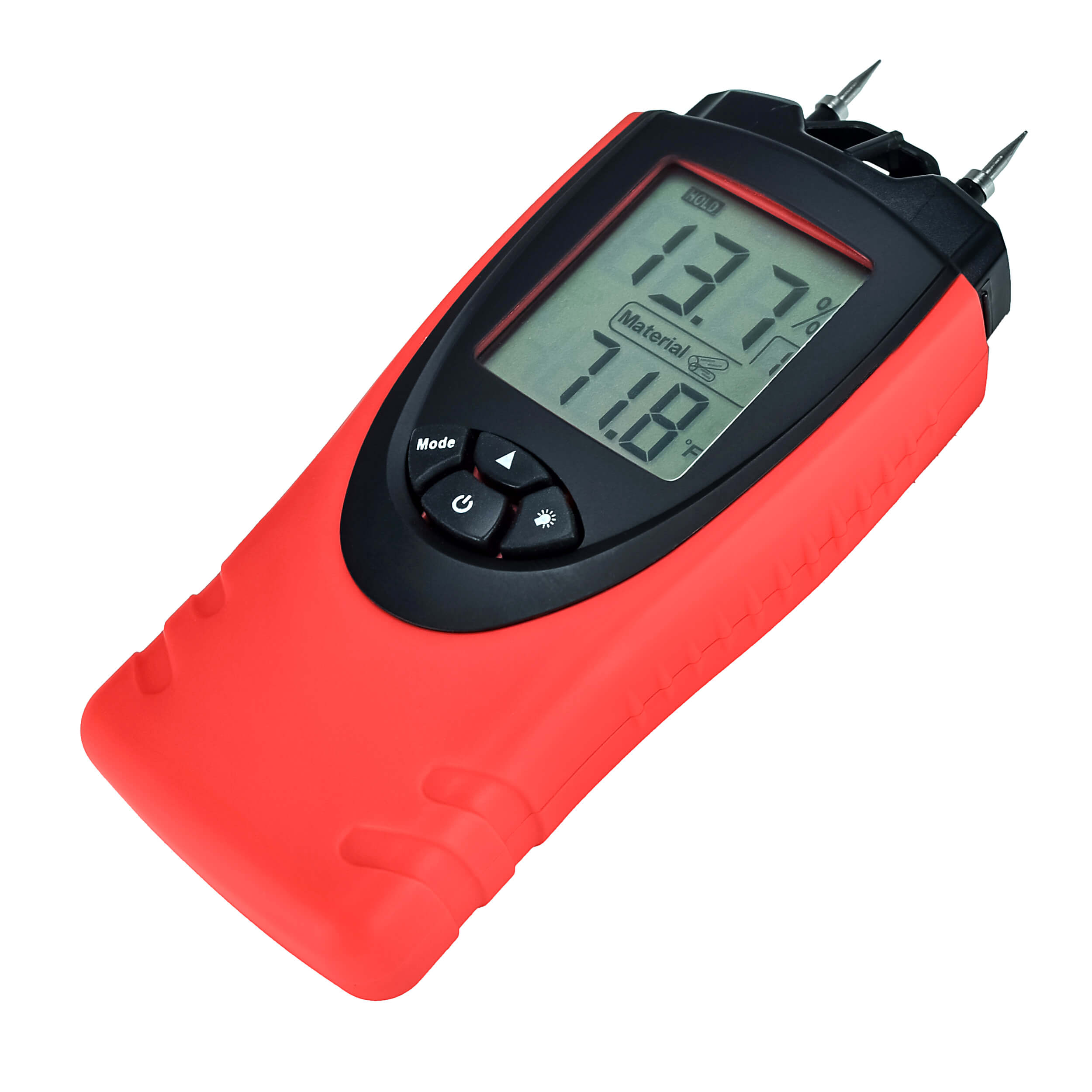The Ultimate Overview to Selecting the Right Moisture Meter for Your Requirements
The Ultimate Overview to Selecting the Right Moisture Meter for Your Requirements
Blog Article
Explore the Globe of Moisture Meters: Everything You Required to Know
In the realm of wetness meters exists a world of precision and usefulness that often goes undetected. Understanding just how moisture meters operate, the different types offered, and their varied uses can shed light on their relevance in guaranteeing quality and efficiency.
Exactly How Moisture Meters Work
Moisture meters operate by gauging the electrical conductivity or capacitance of products to determine the dampness web content existing. These meters are invaluable tools across numerous industries, consisting of woodworking, construction, and farming. By utilizing different approaches such as pin-type or pinless technology, moisture meters offer exact readings that assist specialists make educated decisions.
Pin-type moisture meters work by putting the sharp pins right into the product being tested. On the other hand, pinless moisture meters use electro-magnetic signals to scan a bigger location without triggering any type of damages to the material's surface.
No matter of the technique utilized, moisture meters play an important duty in protecting against problems such as mold growth, architectural damage, or product flaws brought on by excess dampness. Understanding how these meters job is necessary for guaranteeing the high quality and stability of products in numerous applications.
Kinds of Moisture Meters
Given the critical role dampness meters play in various sectors, it is vital to comprehend the various types readily available to experts for accurately evaluating wetness levels - Moisture Meter. There are primarily 2 major kinds of moisture meters: pin-type and pinless moisture meters

On the various other hand, pinless moisture meters use electro-magnetic sensing unit plates to scan a larger area of the product without triggering any type of damages. This type is ideal for swiftly scanning big locations and is frequently made use of for flooring, wall surfaces, and ceilings. Pinless meters are convenient for taking analyses on completed surface areas without leaving any kind of noticeable marks.
Both kinds of wetness meters have their advantages and are chosen based on the specific demands of the job available. Recognizing the distinctions in between these types is essential for experts to make accurate moisture analyses.
Applications Throughout Industries
Construction professionals count on moisture meters to examine the dampness levels in building products like concrete, timber, and drywall, which is crucial for maintaining architectural honesty and stopping issues like rot or mold. The flooring industry makes use of wetness meters to measure the wetness material in subfloors prior to mounting various flooring treatments, avoiding costly damages due to excess dampness. In the food market, moisture meters are utilized to monitor and manage moisture levels in products such as grains, nuts, and dried out fruits to maintain quality and high quality.
Tips for Using Moisture Meters
Utilize the moisture meter's calibration setups to make sure accurate readings when gauging the dampness web content in various materials. Calibration is crucial for the correct performance of a moisture meter. Prior to each usage, it is suggested to check and change the calibration setups according to the certain product being examined. Additionally, make certain have a peek at this website the meter is established to the right wetness variety for the material you are determining to acquire the most exact outcomes.
When making use of a pin-type dampness meter, insert the pins to the proper depth recommended for the material being examined. This guarantees that the dampness readings are extracted from the appropriate depth within the product, supplying a much more exact representation of its dampness material. For pinless moisture meters, remember to keep proper call with the material's surface area to obtain trusted readings.
On a regular basis inspect and replace the batteries in your moisture meter to stop imprecise analyses due to reduced power. Shop the meter in a dry and risk-free area when not in usage to prolong its life-span and keep its accuracy. By complying with these suggestions, you can take full advantage of the efficiency of your moisture meter and acquire exact dampness web content dimensions throughout various products.
Maintenance and Calibration
To make certain the precision of moisture material dimensions, routine maintenance and calibration of the wetness meter are vital site here actions in its correct functioning. Upkeep involves keeping the moisture meter tidy and totally free from debris that can impact its analyses. It is necessary to comply with the producer's guidelines for cleaning up to stop damage to the device. In addition, normal calibration is essential to verify the precision of the analyses. Calibration adjusts the dampness meter to make certain that it gives trustworthy and constant results.
Calibration ought to be performed periodically, specifically if the dampness meter is used regularly or in critical applications where precise dimensions are needed. By adjusting the dampness and preserving meter regularly, users can trust the precision of the wetness content dimensions gotten.
Conclusion

In conclusion, dampness meters play a crucial duty in various markets by properly determining the wetness material of products. Comprehending exactly how these devices function, the various types offered, and proper maintenance and calibration are important for obtaining reliable outcomes. Whether in manufacturing, construction, or farming, using moisture meters helps make sure quality assurance and efficiency in procedures.

In final thought, dampness meters play a vital function in different sectors by precisely determining the dampness content of products.
Report this page